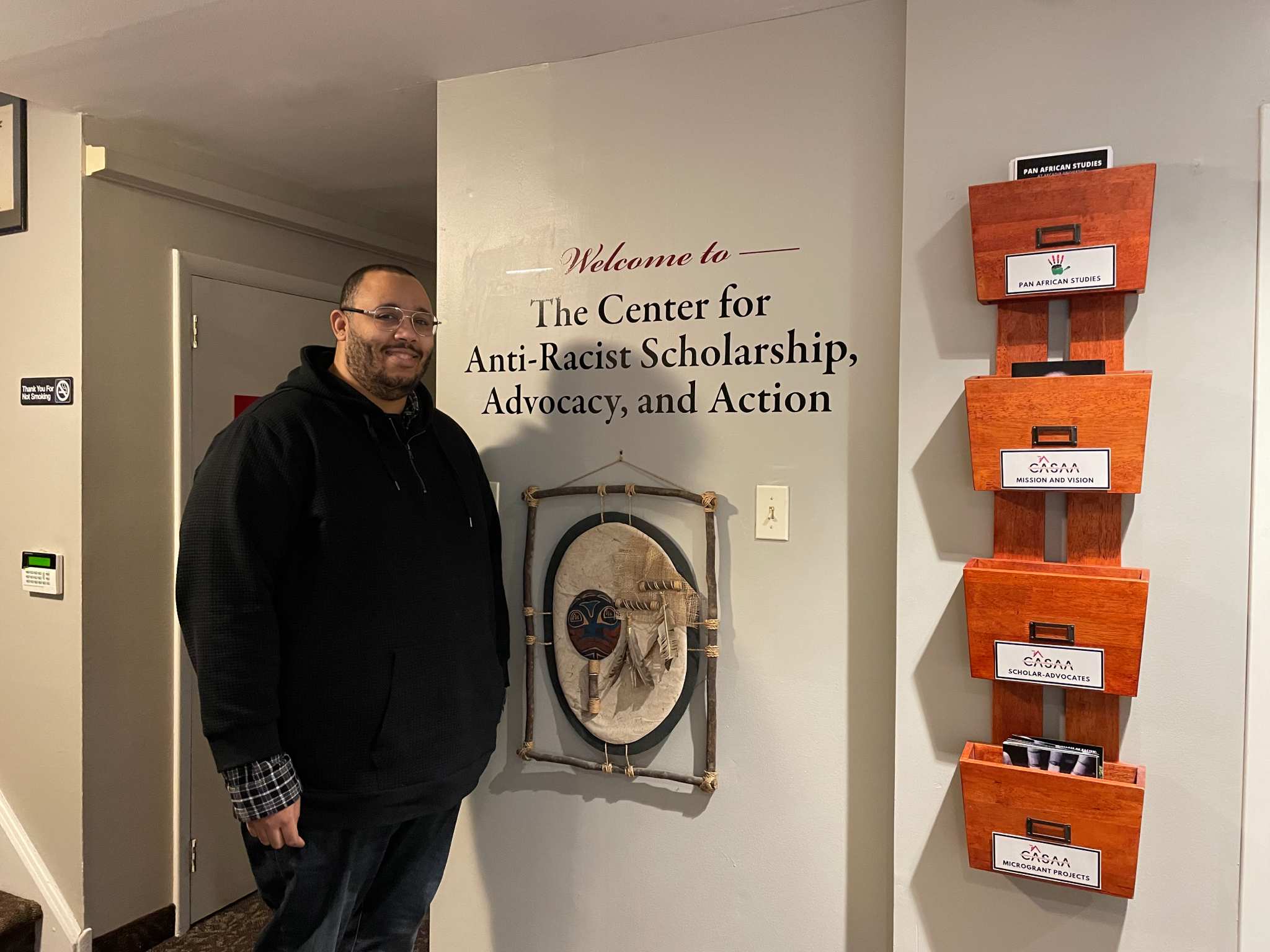A Profound Visit to CASAA Helps Students Combat Racism
In recent years, Arcadia’s community has made new commitments to educating students and combating racism. One of the central efforts of this mission is through the Center for Anti-Racist Scholarship, Advocacy, and Action, or CASAA, which is an on-campus office in its second year, founded to provide important access to information about anti-racist action.
Last semester, I had the opportunity to go to CASAA with one of Helene Klein’s Honors classes. Helene thought that touring the office would spur important conversations and expose students to ideas surrounding race and racism. She was right. When we went to the CASAA building, we saw astounding artifacts, like African pottery and American propaganda images, and gained insight into the historical and cultural significance of the harm that racism has caused. I found the experience to be extremely beneficial and informative and decided to blog about it.
I sat down with Dr. Christopher Varlack, Executive Director of CASAA, to discuss the main ideas and goals of CASAA. I asked Dr. Varlack to talk about the central message CASAA is bringing to students. He told me “Arcadia is really focused, right now, on an anti-racist mission, combating anti-Black racism specifically, but making sure that our students are more equipped with the tools to be informed citizens and to be attuned to social justice issues in the world. So CASAA is one of those spaces that serves as an educational focus for our community.” He went on to explain how CASAA enhances “focus on the ways in which prejudice and stereotypes infuse within our culture, historically, and in the present.” CASAA presents “that image of what racism looks like in its many forms and how these images then create a culture in which one can contribute to the dehumanization of other peoples.”
I shared how I had attended the Dr. Martin Luther King, Jr. celebration with my softball team a few days previously and the way in which the organizers stressed anti-racist practices compared to simply not being a racist. Dr. Varlack expanded on this idea, saying, “So many people in our society are passive in terms of their anti-racist ideologies… that passive engagement isn’t good enough in our world. There have been too many people that have been passive and that enables society to stagnate and not improve for those who are affected by those acts of racism.”
Since I had come to CASAA through the Honors program, I asked about how the center engages with the university, and Dr. Varlack shared that all instructors are sent a tour request form so that they have the opportunity to “integrate a tour of CASAA into their curriculum.” Last semester, the center conducted 21 tours for class groups, which incorporated descriptions of the themes of each room in CASAA and an opportunity for discussion among students. “We are in the process of signing up classes that may intersect with some of the work and artifacts that are present here,” Varlack said. “We are also interested in pairing up with some more student organizations on campus that might benefit from a tour or making use of the space.”
He added that he wanted the center to be “a cultural site on campus” in order to celebrate and preserve the culture and encourage students to reserve the space for events to create “a different kind of community and environment” that stimulates important conversations and learning.
Dr. Varlack shared that CASAA is “definitely interested in increasing our engagement with the student population across campus.” He described their future plans of creating an Emerging Scholars program, which will encourage undergraduate and graduate students to invest in the production and study of anti-racist scholarship. He said CASAA would continue to create new initiatives and expand its impact on the Arcadia community.



